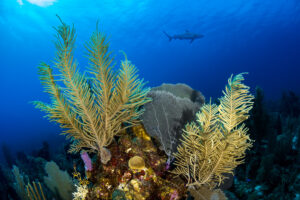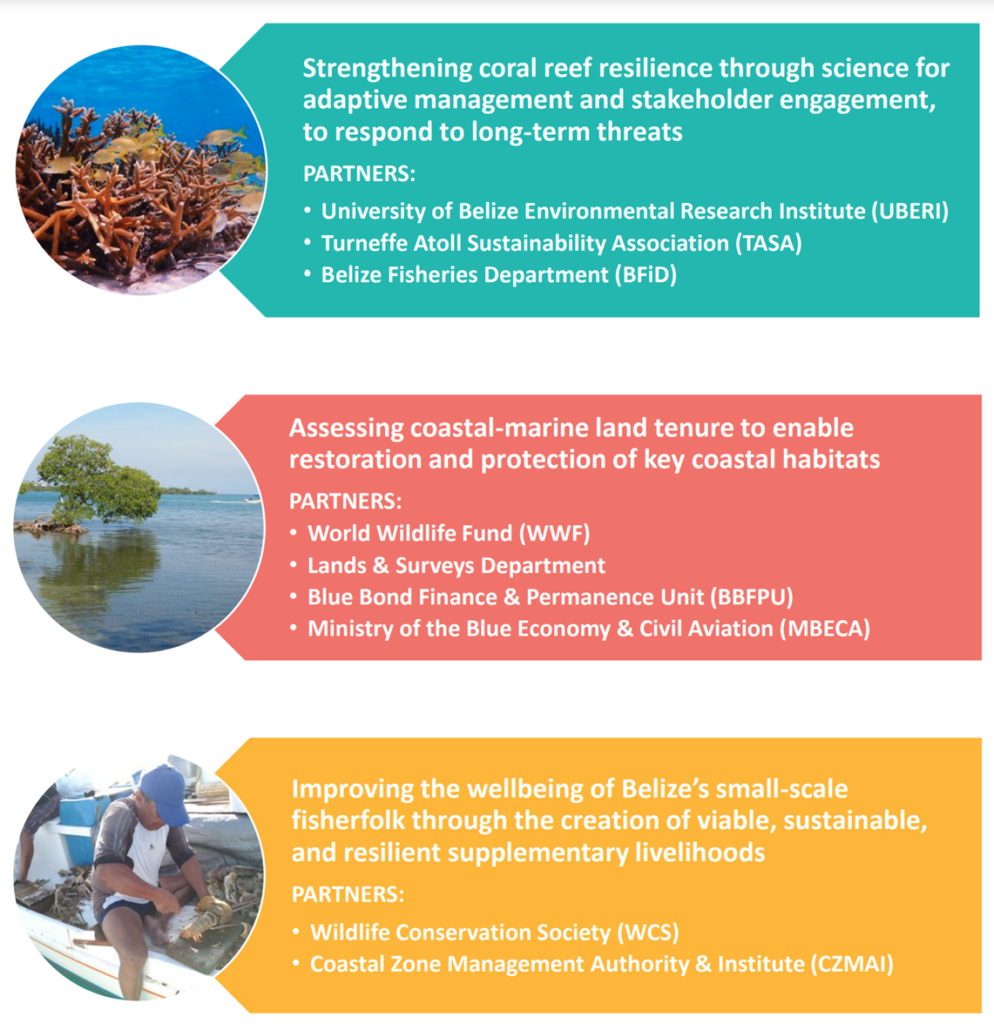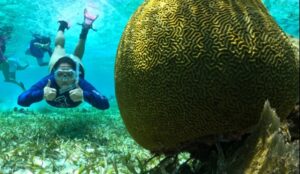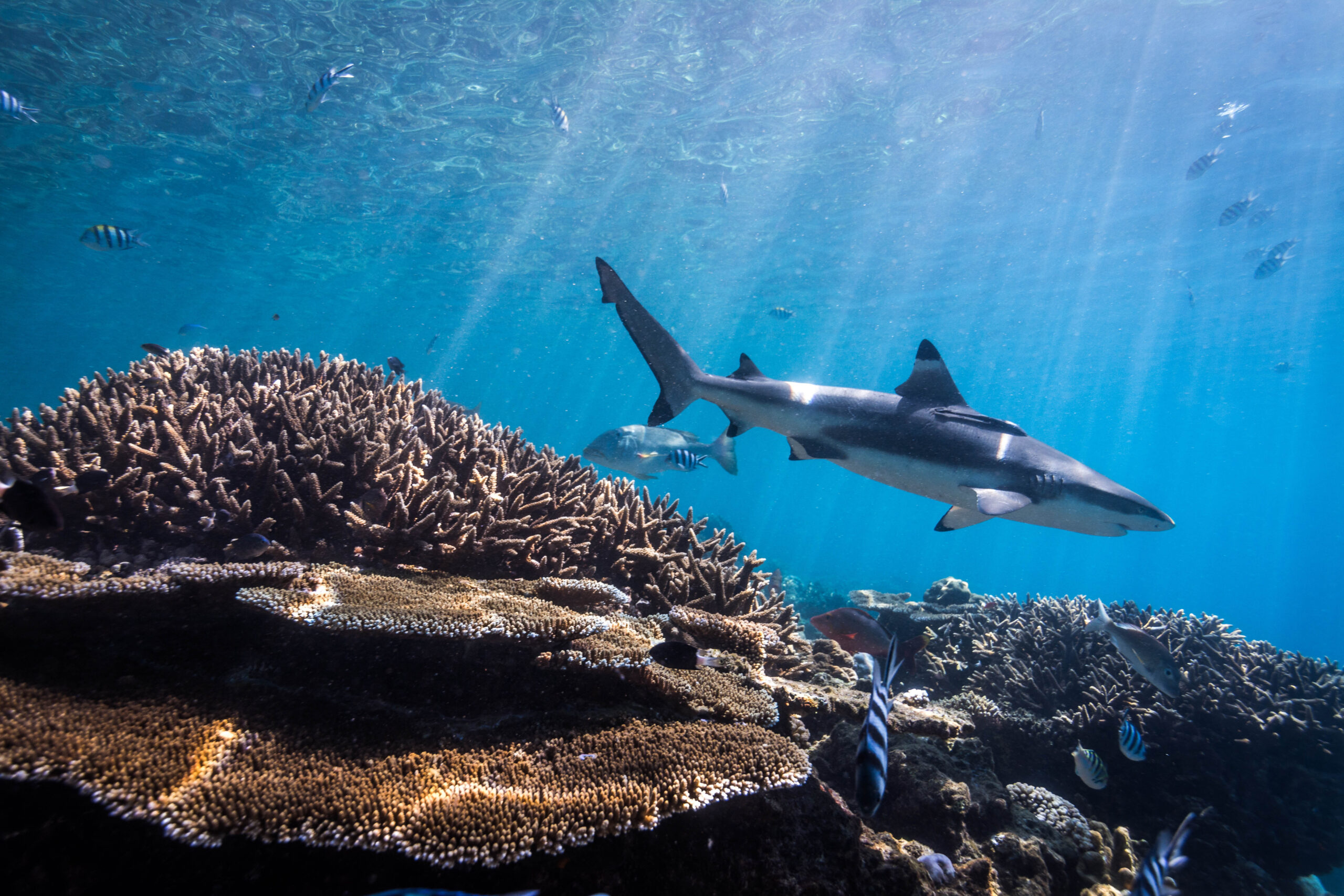Understanding Past Planning Efforts to Inform a Resilience Strategy
Location
Belize

Belize coral reef. Photo © Fabrice Dudenhofer/Ocean Image Bank
The challenge
Designing a resilience strategy brings a lot of benefits, but it can be daunting for managers and management agencies, and confusing for stakeholders, when there are many existing management plans and strategies. In Belize, numerous agencies and organizations have developed plans, working groups, and programs aimed at managing and conserving the Belize Barrier Reef and adjacent ecosystems and coastal watersheds. While this effort from multiple parties is beneficial to Belize’s reefs, it can pose challenges to marine managers in terms of coordination, communication, and understanding existing management activities and how best to leverage resources for the maximum benefit.
Actions taken
Pioneered by the Great Barrier Reef Foundation, the Resilient Reefs Initiative (RRI) is a global partnership bringing together local communities, reef managers, and resilience experts to develop new solutions for adapting to the effects of climate change and local threats. This approach draws on global resilience practice to innovate, build capacity, and pilot a whole-of-community approach with four World Heritage-listed reef sites in Belize, Australia, New Caledonia, and Palau.
To create a resilience-based strategy that is built on existing actions to support their marine ecosystems, the Belize Resilient Reefs Initiative (see callout box) site team conducted a comprehensive gap analysis which compared and identified resilience challenges with existing actions and programs. Over the course of a year, this gap analysis involved a range of engagement activities focused on identifying, prioritizing, and co-designing catalytic management actions with a wide range of stakeholders, from local communities and non-governmental organizations (NGOs) to government agencies. This process included:
- Targeted consultation. Meetings were held with existing organizations and project officers associated with coral reef management to understand current issues, ongoing projects, identified challenges, and gaps in information. This process helped to identify existing research and potential opportunities for collaboration.
- Community collaboration. Broader community engagement was then undertaken with local stakeholders to understand community perceptions, identify emerging themes, and discuss the shocks and stressors that each marine protected area faced. 150 participants from 11 communities across Belize attended, including fishers, residents, tour operators, municipal and village councils, and local NGO representatives.
- Desktop review. Armed with a clear understanding of on-ground issues and opportunities, the team then undertook an analysis of the current policies, strategies, and action plans to map the existing actions aimed at building resilience within the ecosystem, community, and governance dimensions. In total, 69 plans by 20 author organizations were reviewed, containing 429 resilience actions. The plans focused primarily on fisheries and marine protected area management, tourism, coastal development, waste management, trade, and emergency response. The result of the desktop review was the identification of key strategic documents including 26 priority plans, an evaluation of the management effectiveness of protected areas, and an integrated reef resilience index for Belize.
- Resilience assessment. Using the information gained during stakeholder engagement and the desktop review, the team undertook a qualitative resilience assessment process using the RRI Tool for Assessing the Resilience of Communities and Reefs, which utilizes holistic reef resilience theory and practice to create an overview of the resilience of the reef ecosystems, communities, and governance systems. This resilience assessment and the findings of the broader engagement were shared with stakeholders and partners for discussion and prioritization.
- Prioritizing resilience challenges. In collaboration with a select group of stakeholders, including management agencies, NGOs, and industry representatives, the resilience challenges were prioritized in a series of review workshops. Through these workshops, the RRI Belize team developed clear focus areas and identified opportunities to enhance resilience through future management actions and projects. They prioritized resilience challenges to focus efforts on by considering the following questions:
- Does the challenge address the issues that will have the greatest impact on the reef’s resilience?
- Does the challenge highlight an area where there is little attention or action being made? Or a gap in management or resourcing?
- Does the challenge provide an opportunity for the local community to take action and make a difference?
- Would collaboration with global reef sites help fix this problem?
- Are innovative solutions needed in comparison to business as usual?
- Are these challenges aligned with existing reef management plans and other strategic planning documents for the site?
The process generated two cross-cutting themes and three focus areas, which represented opportunities to address gaps and complement existing actions within the broader suite of actions and plans:
How successful has it been?
- Validation of existing priorities and identifying gaps. The assessment process reinforced alignment between existing management plans, on-ground stakeholder feedback, and high-level government objectives. The assessment was also an opportunity to analyze the policy and project landscape in light of the current objectives and direction of the government—which is strongly prioritizing conservation of marine ecosystems and development of a Blue Economy—and identify areas where there are limited resources and funding available for implementation of actions.
- Integration rather than duplication. The assessment process identified catalytic actions which could fill gaps in the existing planning environment and enhance existing actions. Three flagship actions were designed and funded as part of the strategy development process (see infographic below). Because of the crowded planning landscape, the decision was made to focus on a few key projects that specifically addressed gaps that were identified, rather than identify and fund dozens of new actions.

Three flagship actions designed and funded in Belize as part of the RRI strategy development process.
- Strong buy-in and uptake. The government adopted the strategy and flagship projects within months of their creation because they directly addressed gaps identified by multiple agencies and had buy-in from local champions. For example, one of the flagship actions was a marine land tenure assessment, which was identified as an enabling condition for enhanced protection of mangrove areas through carbon or biodiversity crediting. This land tenure analysis will enable implementation of many key plans and programs, including the Belize Blue Economy Development Policy, Strategy & Implementation Plan, Integrated Coastal Zone Management Plan, National Carbon Framework, Belize Blue Bonds for Ocean Conservation Program, as well as existing marine spatial planning processes. The assessment was recently funded by RRI as a direct output of the strategy development process.
Lessons learned and recommendations

Mar Coast Belize. Photo © Great Barrier Reef Foundation
- Celebrate and support existing resilience actions. In most cases, resilience planning will not start from scratch. Resilience-based management actions and activities will likely be happening already as part of existing management plans, NGO programs, or local/grassroots community initiatives, even if they are not identified as resilience.
- Align with existing plans and enable existing actions. The team focused on building relationships between agencies and aligning with existing priorities to enable action, rather than creating tension by pursuing issues for which there was no political will to address. In this regard, resilience practitioners need to pick their battles – while some difficult issues need to be addressed, in many cases there are enough resilience challenges to be able to prioritize those which also build political capital and strengthen motivation for further action.
- Be aware of stakeholder fatigue. Meaningful community engagement is imperative for the success of public policy or management actions within coastal and marine areas. However, there is often limited capacity and/or interest for stakeholders to meet continuously and actively provide input for management decisions; in many cases, these approaches have felt more like a burden than collaboration. To avoid stakeholder fatigue, the RRI Belize team combined their sessions with existing engagement activities being undertaken by partner organizations, as well as utilized earlier findings rather than repeatedly asking the same questions to the same communities. In these circumstances there also needs to be a focus on delivering real outcomes rather than continual education and engagement.
- Prioritize meetings and co-design over desktop review. While identifying challenges and priorities from existing documentation was relatively straight-forward, the team found prioritizing workshops and design sessions with partners and stakeholders was more effective at understanding progress (and barriers to progress) of existing actions, identifying common ground, and defining next steps, than spending time on the desktop assessments.
- Identify champions. Identifying and engaging with champions for particular actions early in the process was crucial. Ideally these champions have influence with approving ministries or agencies, or among particular stakeholder groups, and capacity to implement and deliver actions.
Funding summary
All funding and support for engagement activities was provided through the Resilient Reefs Initiative, of which Belize is one of four pilot World Heritage-listed reef sites. RRI is a collaboration between the Great Barrier Reef Foundation, The Nature Conservancy’s Reef Resilience Network, Columbia University’s Center for Resilient Cities and Landscapes, Resilient Cities Catalyst, UNESCO, and AECOM. The Initiative is funded by the BHP Foundation.
Lead organizations
Coastal Zone Management Authority and Institute
Ministry of the Blue Economy & Civil Aviation
University of Belize: Environmental Research Institute
Turneffe Atoll Sustainability Association
Partners
Ministry of Natural Resources Lands and Surveys Department and the Mining Unit
Association of Professional Engineers of Belize
Association of Real Estate Brokers of Belize
Belize Tourism Industry Association
Southern Environmental Association Belize
The Belize National Commission for UNESCO
Various other local industry, real estate and community representatives


